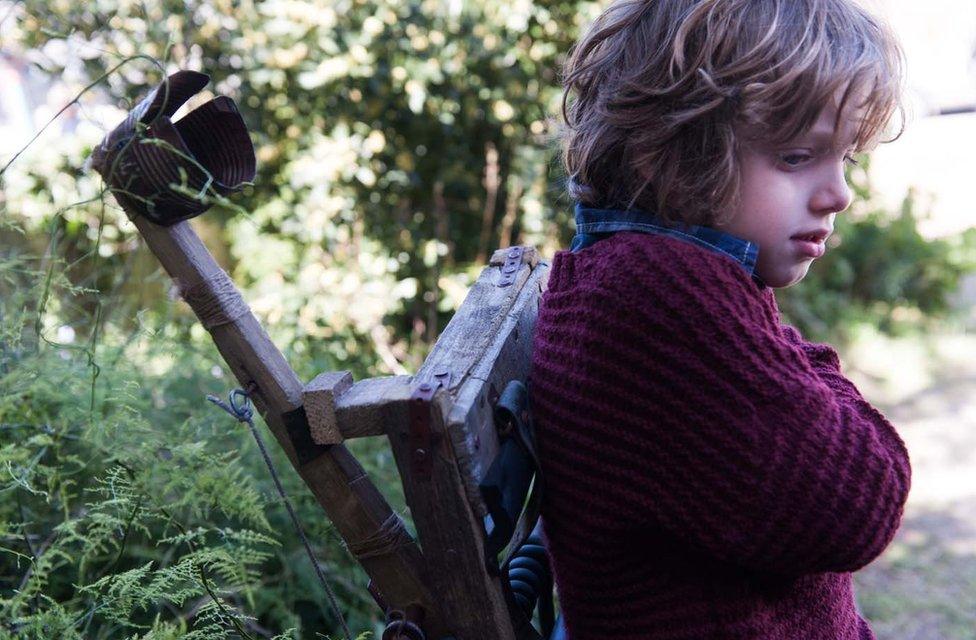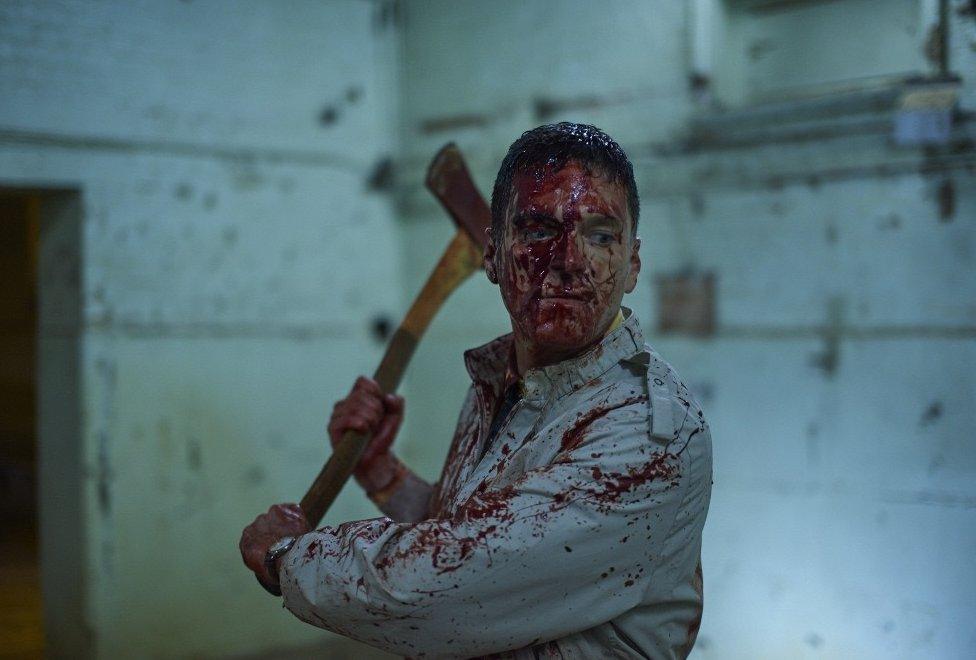Australia's dark heart inspires horror movie boom
- Published

The Babadook is widely viewed as one of the best horror films of recent years, with a 98% positive rating on review aggregator Rotten Tomatoes
The eerie and ancient Australian outback lies at the heart of a horror movie wave that's scaring the wits out of global audiences, writes Clarissa Sebag-Montefiore.
When filmmaker Joseph Sims-Dennett suffered a nervous breakdown he channelled his energies into making a horror film. Observance was shot on a shoestring budget in Sydney in just eleven days.
In a concrete anonymous city, a private investigator is grieving the loss of his son. Installed in an empty, dirty apartment, he is ordered to spy on a woman living opposite.
Soon black gunk starts to ooze from the walls, animal corpses appear unexplained and his dreams become more and more disturbed.
While the actors speak with an "everyman" American accent - an artistic, rather than commercial decision - Sydney-based Sims-Dennett, 27, was inspired by his reflections on Australia.

Observance, which has been praised on the film festival circuit, is part of a wave of horror films produced in Australia
"Australia broadcasts this laid-back easiness but it is really a very conservative country," says the British-born director. "Art takes off in those periods when you're being stifled and oppressed. There is a sort of darkness that lurks [here] somewhere."
In Sims-Dennett's eyes Sydney is fast becoming a nanny state, suffocated by draconian lockout laws and surveillance, and he touches on these issues in Observance.
Premiering next month in Australia, industry bible The Hollywood Reporter has already dubbed the film a "chilling experience" that grips "viewers by the throat".
A distinctive scariness
Australia is known as the "lucky country", blessed with perfect beaches and weather. Yet over the last decade it has also started to make a name as one of the world's horror capitals.
A turning point was 2005's Wolf Creek. Made with an estimated budget of just A$1m ($750,000, £530,000), it became a box-office hit, grossing $29m worldwide. Other runaway successes include Saw (2004), shot in America but directed by Australian James Wan and now a lucrative franchise.

Director Joseph Sims-Dennett says there's a darkness in Australia that lends itself to horror
Wolf Creek "paved the way in terms of theatrical successes," says Causeway Films' Kristina Ceyton, producer of psychological horror hit The Babadook. "The world is very much looking to Australia for interesting new stories."
Colin Cairnes, co-director of Australian horror-comedy 100 Bloody Acres and this month's new release Scare Campaign, agrees. "We do have a reputation [abroad] ... maybe that's because we have a bit more freedom here [that allows] a more distinctive voice. We're not part of the Hollywood machine."
Before the 1970s, horror films were virtually non-existent in Australia; from 1948-68 most were banned. While the US and Europe drew on authors such as Edgar Allan Poe and Bram Stoker, Australia literature was more concerned with exploring brutal tales of pioneer life.
Today that has come full circle. Now much of Australian horror, including Peter Weir's unsettling 1975 masterpiece Picnic at Hanging Rock, taps into "fear of the mysterious and threatening landscape, fear of Australia itself, you might say, a hangover of our colonial past," says Briony Kidd, director of Tasmania's international horror film festival, Stranger With My Face.
Landscape built for terror
Australians, living in one of the world's most urbanised countries, "love but also fear the outback that lies beyond the suburbs," says Cairnes. "In a perverse way, we take some pride in how deadly, how dangerous a place Australia is. If you jump into the wrong creek you could be a goner."

Scare Campaign is a new Australian horror film that has attracted buzz with its prank-gone-wrong premise
The looming landscape is present across the genre. In Lake Mungo (2008) a clue to a girl's death is found in a famous beauty spot, a vast dry lake. In Black Water (2007) holidaymakers on a fishing trip in the mangroves of northern Australia find themselves prey to a killer crocodile. And in Wolf Creek, based partly on notorious "backpacker murderer" Ivan Milat, travellers in the outback become fodder for gratuitous and violent torture.
"You learn about a culture in a much deeper way because [horror films] are drawing on our own fears," says Sims-Dennett. "The outback is this ancient, flat, eerie piece of land. Its inspires thoughts where you consider yourself and your life and where you are."
But makers of Australian horror films face plenty of challenges. With independent cinemas shutting down, finding distributors domestically is tough. The market for horror remains "underdeveloped" in terms of marketing and theatrical support.
One result is horror films doing poorly at home only to be acclaimed abroad. In the UK The Babadook made more in its opening weekend - $633,000 over three days - than in its entire run in Australia, where it earned just $256,000.
This leaves Sims-Dennett nonplussed. He believes there is something "very specific" about Australian horror. And, like J-Horror in Japan, that it will stand the test of time.
Perhaps Snowtown (2011) sums it up best. The film fictionalises the story of infamous serial killer John Bunting, who stored the bodies of his victims in the vault of a disused bank. In the movie Bunting is asked why he resorts to violence.
His reply? "It's the Australian way."
- Published10 May 2015
